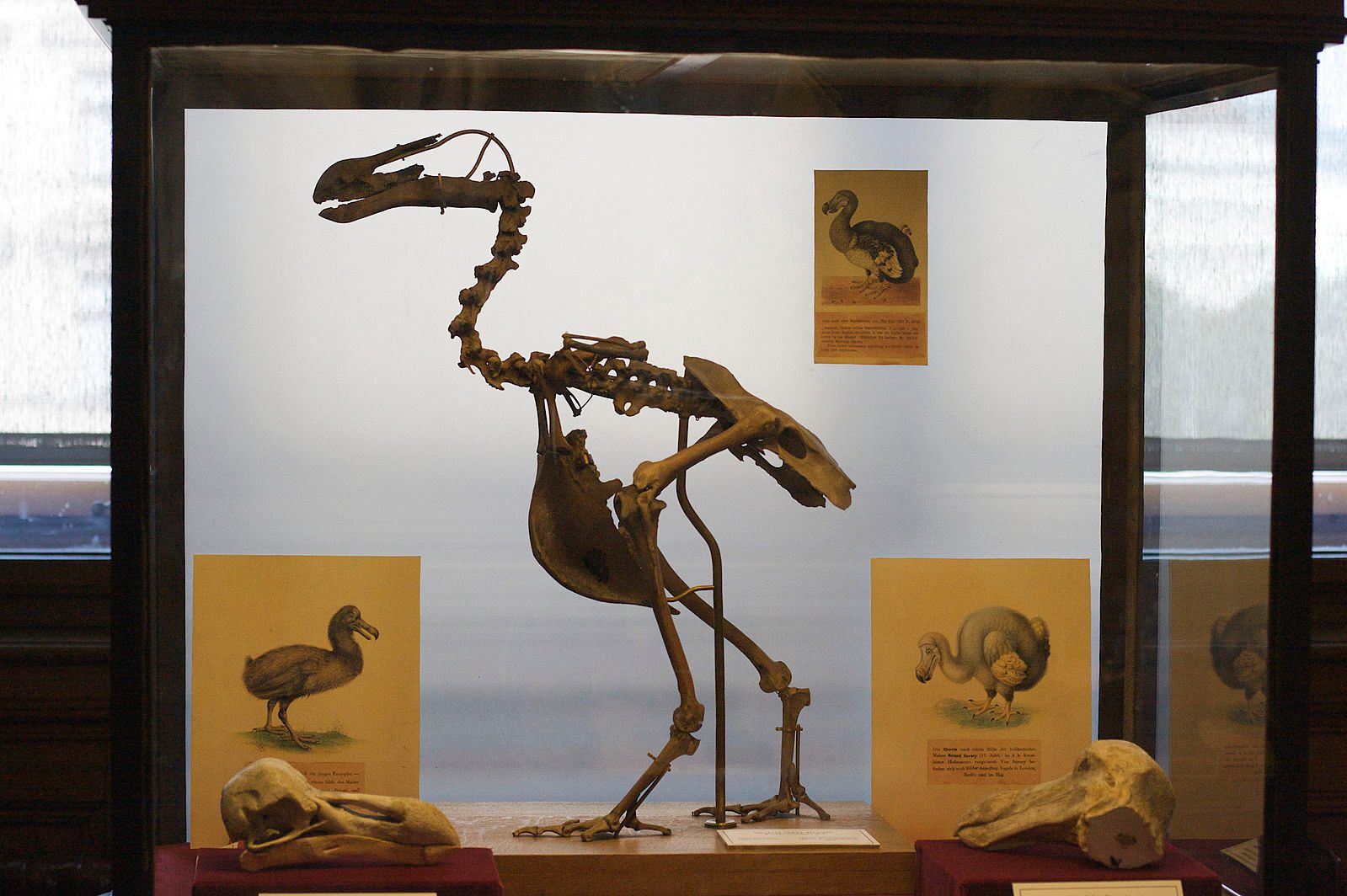Why the ‘Sixth Extinction’ is Always in the News
 Remains of the dodo, a relatively well-known victim of this latest extinction. (Photo: Semihundido/Flickr CC BY 2.0)
Remains of the dodo, a relatively well-known victim of this latest extinction. (Photo: Semihundido/Flickr CC BY 2.0)
As you may have heard, humans are killing everything. According to a study published last week in Science, the earth is practically hemorrhaging mammals, birds, and reptiles, and Homo sapiens might not be far behind. The paper, which The New York Times called “blunt and frightening,” set out to “assess … whether humans are causing a mass extinction” by comparing current extinction rates with pre-human background rates—how quickly species disappeared before we came along. Its authors found that yes, we’re in the middle of a huge die-off, and yes, it’s our fault.
If you read this and felt a sharp jab of familiarity, it’s not the ghost of the Western black rhino back to exact revenge. It’s likely a sign, instead, that you’ve heard something similar before. Perhaps you recognize the conclusions of, supporting evidence for, and tenor surrounding this discovery from Scientific American in 2014, or Newsweek in 2013, or The Guardian in 2012, or the The Huffington Post in 2011, or New Scientist in 2010, or The New Yorker in 2009, or BBC News in 2008, or Nature in 2007. If you’re into books, maybe you spotted it in Elizabeth Kolbert’s The Sixth Extinction, which won the Pulitzer Prize for Nonfiction this year, or in works of the same name by Terry Glavin (2007) or Richard Leakey (1996).

A sampling of sixth extinction headlines throughout recent history. (Atlas Obscura)
Most of these articles and books center on journal articles published by biologists, geologists, and paleontologists. This isn’t, in itself, too strange—studies are done on the same subjects all the time, because that’s how knowledge progresses. What’s surprising, says Dr. Stuart Pimm, is how little the conversation has changed—especially since the science driving it has actually changed a lot.
Pimm, who serves as the Doris Duke Chair of Conservation at Duke University, has studied extinction for his entire career, and authored one paper on the current mass extinction, in Science, as far back as 1995. “This is a story that crops up every year,” he says. “If I might draw an analogy, it’s as if the world woke up one day and said ‘oh my god! people are dying! and they’re dying from disease, and this is really terrible!’… there is this tendency for people to rediscover the appalling news.”
 The golden toad, last seen in the wild in 1989. (Photo: US Fish and Wildlife Service/WikiCommons Public Domain)
The golden toad, last seen in the wild in 1989. (Photo: US Fish and Wildlife Service/WikiCommons Public Domain)
This is unfortunate, Pimm says, because there are more encouraging developments that the public could be discovering for the first time instead. For example, those increasingly accurate, attention-garnering extinction rate estimations are the result of innovations that also make active conservation efforts more effective. “We now have much better technology to study where species are, where they’ve been moved by global warming, and where they are likely to be threatened,” as well as where they’re more likely to be saved, Pimm says. This has led to recent resurgences of whales and bald eagles, as well as other less well-known species, and a vast increase in protected areas.
When you take this into account, conservationists aren’t just doomsayers, they’re doctors, too. “What happens when you go and see your doctor?” says Pimm, continuing an earlier analogy. “She doesn’t say, ‘You’re going to die’… she says, ‘These are the following things we can do to make your life better, longer, more productive.’ We in the conservation profession spend our time looking at ways in which we can prevent species from going extinct.”
 Scientists put a tracker on a sea turtle in the Tropical East Pacific. (Photo: NOAA Photo Library/Flickr Public Domain)
Scientists put a tracker on a sea turtle in the Tropical East Pacific. (Photo: NOAA Photo Library/Flickr Public Domain)
Pimm published another mass extinction paper in Science last year diagnosing the current crisis, as well as pointing out how much better we’ve gotten at mitigating it, and offering suggestions about where to focus next (namely, on reconnecting and protecting ecological hotspots). But, he says, many reporters missed that second thread. “I was disappointed that much of the media coverage insisted on calling it the sixth extinction, and spent less time than I would have liked in talking about the fact that we are now following what’s going on with very much better information than we had in the past,” Pimm says. Of this latest headline-stealing paper, Pimm says he thinks it “reiterates the fact that we have an extinction crisis.” He then does some of his own reiterating: “I am disappointed that it doesn’t talk about solutions.”
Perhaps because many of the reporters he is disappointed in were quoting him directly, Pimm has since moved away from the term “sixth extinction”—“it has this air of cataclysmic finality,” he says, “and I think it misses really the important things that are going on.”
And while emphasizing cataclysmic finality is a good strategy for getting attention, it’s not so great at precipitating change—even if knowledge inspires action, apocalyptic knowledge can cancel it out. As environmentalist Edward Abbey once wrote, “when the situation is hopeless, there’s nothing to worry about.”
 An Eastern Black Rhinoceros in Ngorongoro Crater, Tanzania. This species is critically endangered, and its last Western cousin was killed around 2001. (Photo: Ikiwaner/WikiCommons GFDL)
An Eastern Black Rhinoceros in Ngorongoro Crater, Tanzania. This species is critically endangered, and its last Western cousin was killed around 2001. (Photo: Ikiwaner/WikiCommons GFDL)
Naturecultures is a weekly column that explores the changing relationships between humanity and wilder things. Have something you want covered (or uncovered)? Send tips to cara@atlasobscura.com.















Follow us on Twitter to get the latest on the world's hidden wonders.
Like us on Facebook to get the latest on the world's hidden wonders.
Follow us on Twitter Like us on Facebook